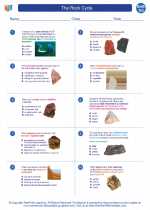Electromagnetic Field
An electromagnetic field is a physical field produced by electrically charged objects. It affects the behavior of charged objects in the vicinity of the field. The electromagnetic field extends indefinitely throughout space and describes the electromagnetic interaction. It consists of two components: the electric field and the magnetic field.
Electric Field
The electric field is a vector field that describes the force exerted by a charged particle on another charged particle. It is created by electric charges and is responsible for the electric force. The strength of the electric field is directly proportional to the magnitude of the charge creating the field and inversely proportional to the square of the distance from the charge.
Magnetic Field
The magnetic field is also a vector field that describes the force exerted on a moving charged particle. It is created by moving charges or changing electric fields and is responsible for the magnetic force. The strength of the magnetic field is directly proportional to the strength of the current and the distance from the current-carrying conductor.
Electromagnetic Waves
When an electric field changes with time, it creates a magnetic field, and when a magnetic field changes with time, it creates an electric field. This interplay between electric and magnetic fields gives rise to electromagnetic waves, which are waves of energy that propagate through space. These waves have both electric and magnetic components and include radio waves, microwaves, infrared radiation, visible light, ultraviolet radiation, X-rays, and gamma rays.
Study Guide
- What is an electromagnetic field?
- Describe the electric field and its characteristics.
- Explain the magnetic field and its properties.
- How are electromagnetic waves produced?
- List the different types of electromagnetic waves.
Understanding the concept of electromagnetic fields is crucial in various fields such as physics, engineering, and telecommunications. It forms the basis for the study of electromagnetism and the behavior of light and radiation.
[Electromagnetic Field] Related Worksheets and Study Guides:
.◂Earth Science Worksheets and Study Guides High School. The Rock Cycle

 Worksheet/Answer key
Worksheet/Answer key
 Worksheet/Answer key
Worksheet/Answer key
 Worksheet/Answer key
Worksheet/Answer key
 Vocabulary/Answer key
Vocabulary/Answer key
 Vocabulary/Answer key
Vocabulary/Answer key
 Vocabulary/Answer key
Vocabulary/Answer key
